Table of Contents
Hydropower Models: Demonstrate Hydroelectricity Without a Field Trip
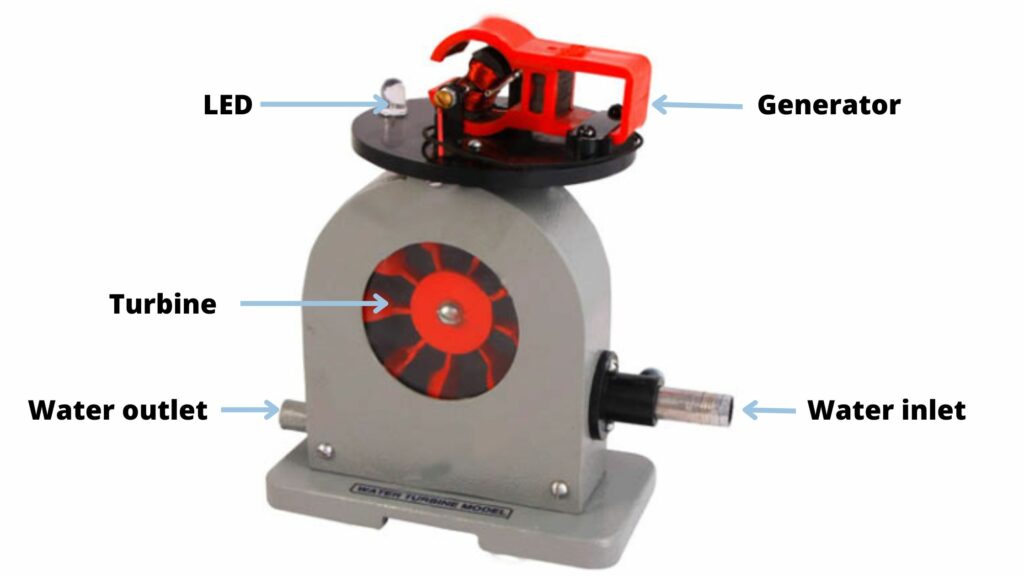
What is Hydroelectric Power?
Hydroelectric power, hydropower or hydroelectricity are synonymous, and represent the untapped energy contained within flowing water. This is in case of naturally flowing water found in streams, rivers and waterfalls. The hydropower model allows us to visualize this, as we will see shortly.
How do Dams Harness Hydropower?
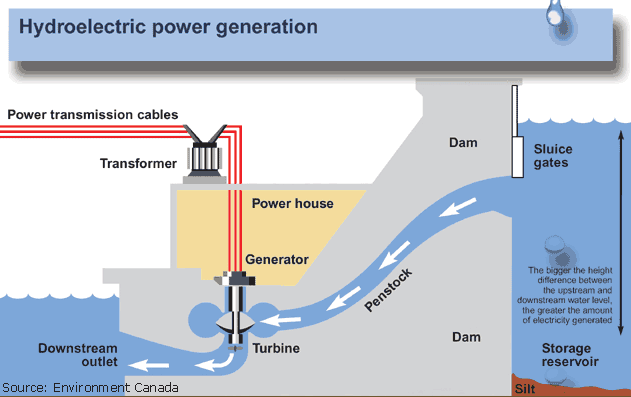
Generally, hydropower is harnessed using dams. For this, water must flow from a higher to a lower altitude. As the water loses height, its potential energy is converted into kinetic energy, which increases the speed of the falling water. This speed boosts the mechanical energy of the water, which strikes a turbine at the bottom. The spinning turbine then uses this mechanical energy to rotate the armature of a generator. Finally, the generator converts mechanical energy into electricity. This electricity is generated due to Faraday’s Law of Electromagnetic Induction acting inside the generator.
To create a difference in potential energy, the dam stores water in its reservoir, known as headwater. When this headwater is released through the dam’s turbines, the water rotates the turbines. The used water, called tailwater, is then released from the other end.
Best DIY Hydropower Models for Demonstration
Normally, you need to visit a real dam to see how dams harness hydropower. However, a hydropower demonstration model makes it easy to teach these concepts right in the classroom. Let’s explore how this model makes learning about dams and hydroelectricity hands-on and simple.
Hydropower Model for School Project Demonstrations
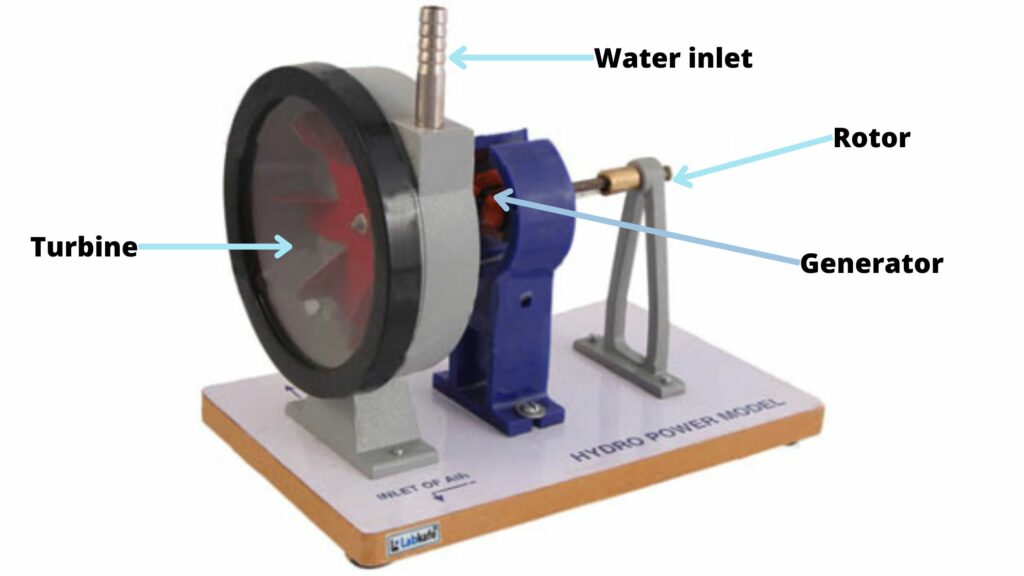
This basic model helps you understand the significance of hydroelectric power. Flowing water enters through the inlet pipe at the top and drives the turbine, causing it to spin continuously. As the turbine spins, it rotates the rotor that extends from the right side of the turbine. This rotor connects to a generator, as shown on the right-hand side. The generator then produces electricity through electromagnetic induction.
Remember, actual dams work the same way. Water flowing from a height spins the turbine, which rotates the rotor. Similarly, in this model, we pump water to the turbine, which spins and produces rotational mechanical energy. The generator then converts this mechanical energy into electrical energy.
But can you actually demonstrate the generation of electricity? Let’s find out in the next section.
Hydropower Model to Demonstrate Generation of Electricity
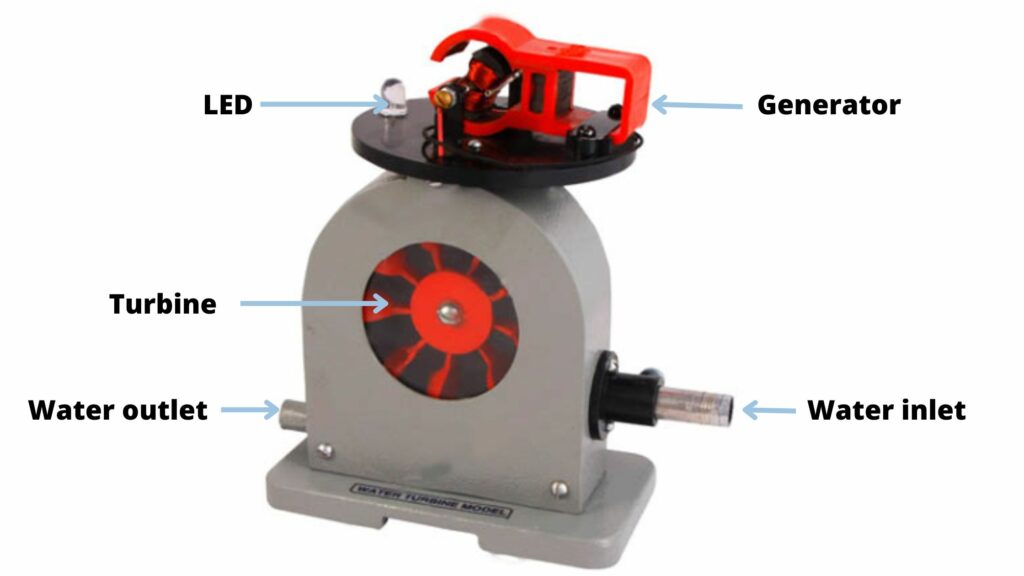
This model includes additional features like an LED bulb connected to the generator output. The energy from the generator powers the LED, converting electrical energy into light. The main components remain the same; a water inlet and outlet to rotate the turbine, and a generator attached to the turbine to produce electricity. However, the LED bulb is an added feature that lights up when electricity from the generator flows into it. This helps confirm that the model is working and that the flow of water is successfully converting mechanical energy into electrical energy.
Mini Hydropower Dam with Turbine for School Projects
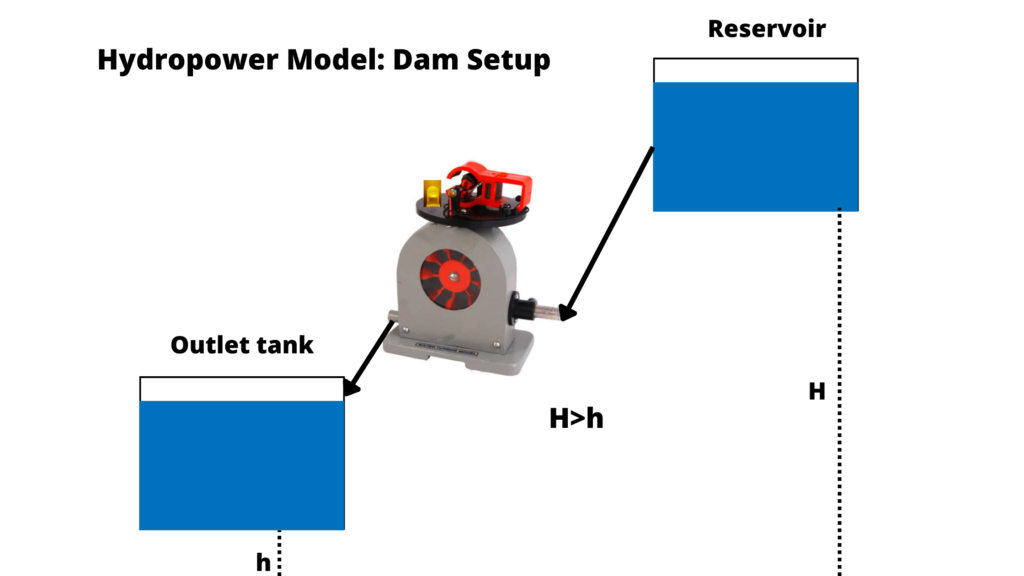
To best utilize the setup provided, simulate the construction of a dam and place the hydropower model strategically to enable maximum generation of electricity. Let’s examine this setup:
- Place the hydropower model at a moderate height.
- Connect a water tank (reservoir) at a higher level than the model. This tank stores water at an elevated height, simulating a dam reservoir.
- Allow water to flow from the reservoir into the hydropower model. As the water flows downward, it hits a mini turbine.
- The turbine starts to spin due to the force of the falling water. This mimics the working of a turbine in a real hydropower dam.
- Let the water exit through an outlet and collect in a lower overflow tank. Place the outlet tank at a height h, which is lower than both the reservoir and the hydropower model.
- Place the reservoir tank at a greater height H, so that H > h, with the hydropower model located between the two tanks.
- This setup correctly replicates the functioning of a real dam, as it shows water flowing from a height, rotating a turbine, and finally draining into a lower outlet.
- As the turbine spins, it generates electricity that lights up an LED bulb. This demonstrates the conversion of mechanical energy (from the reservoir water) into electrical energy, and then into light energy.
To set up the mini dam with turbine, get your own hydropower model today!
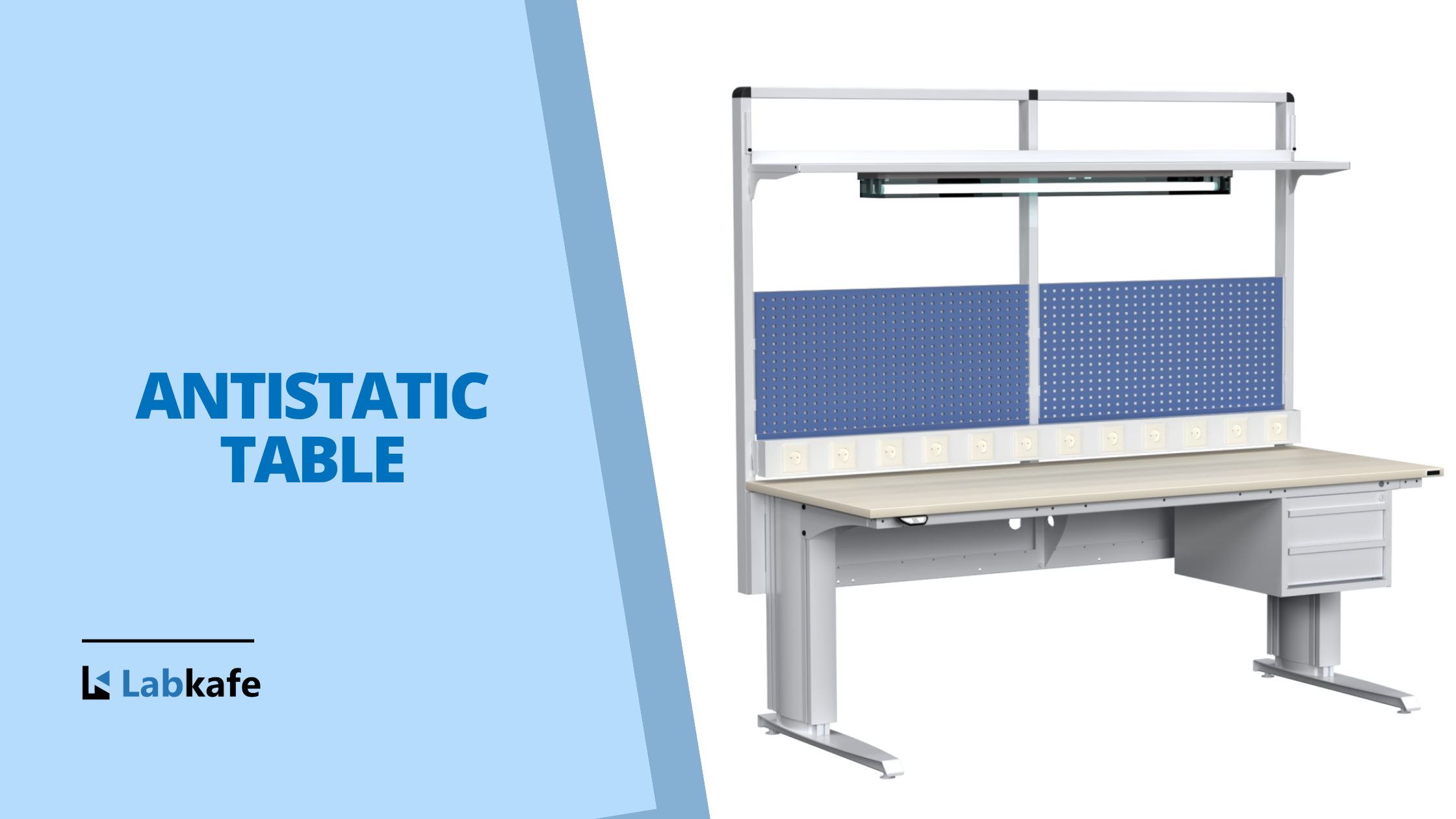
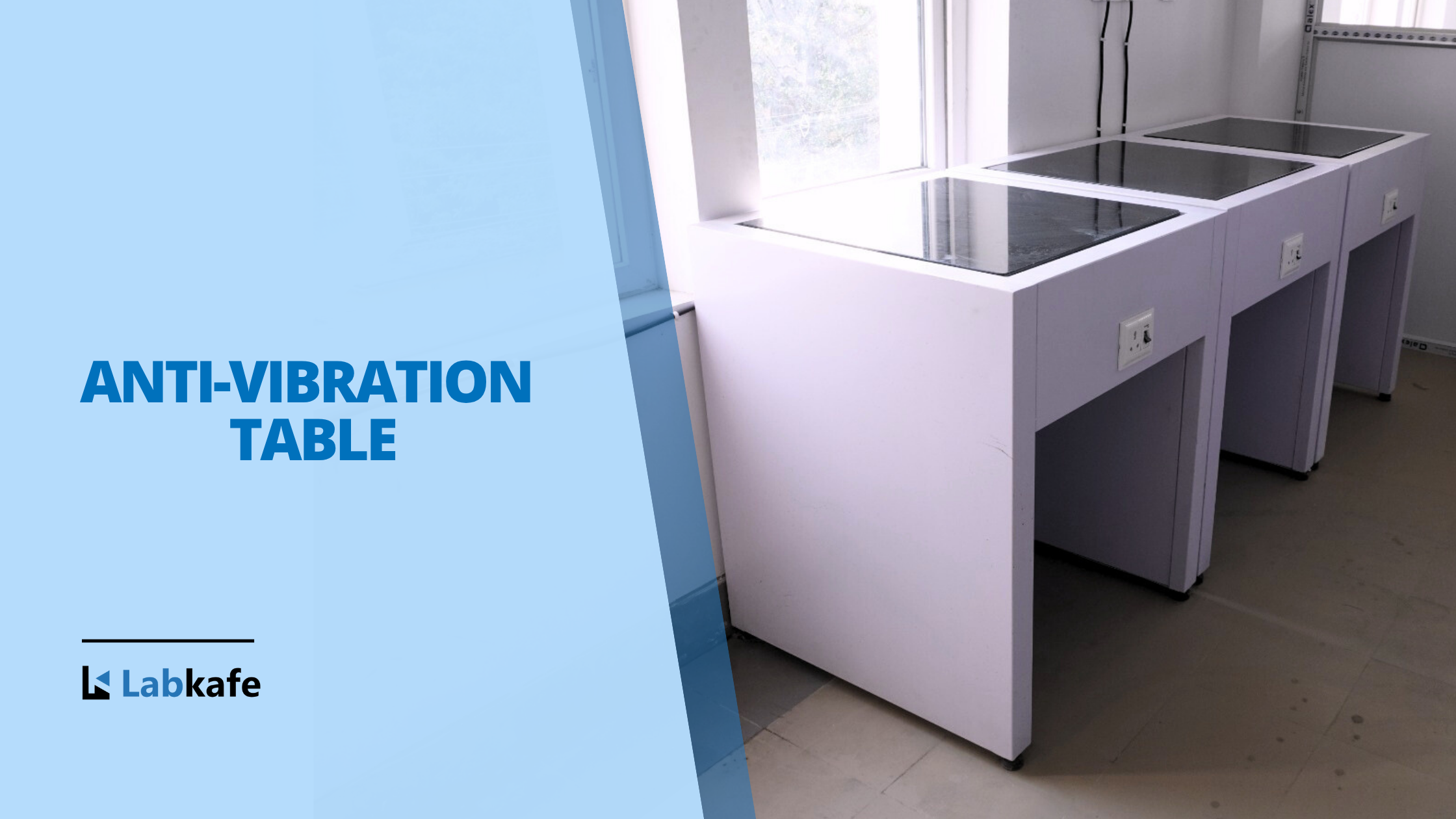

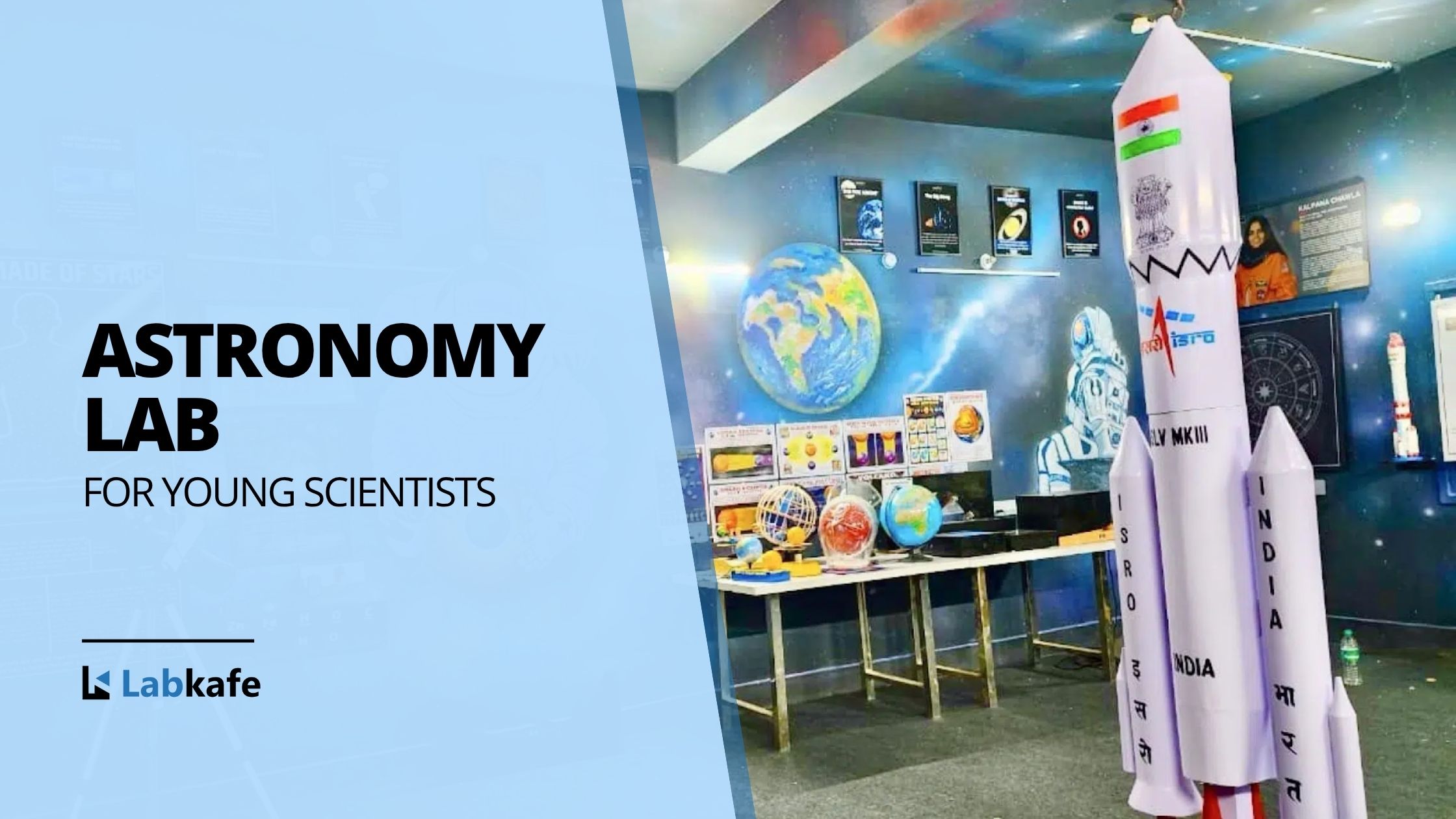
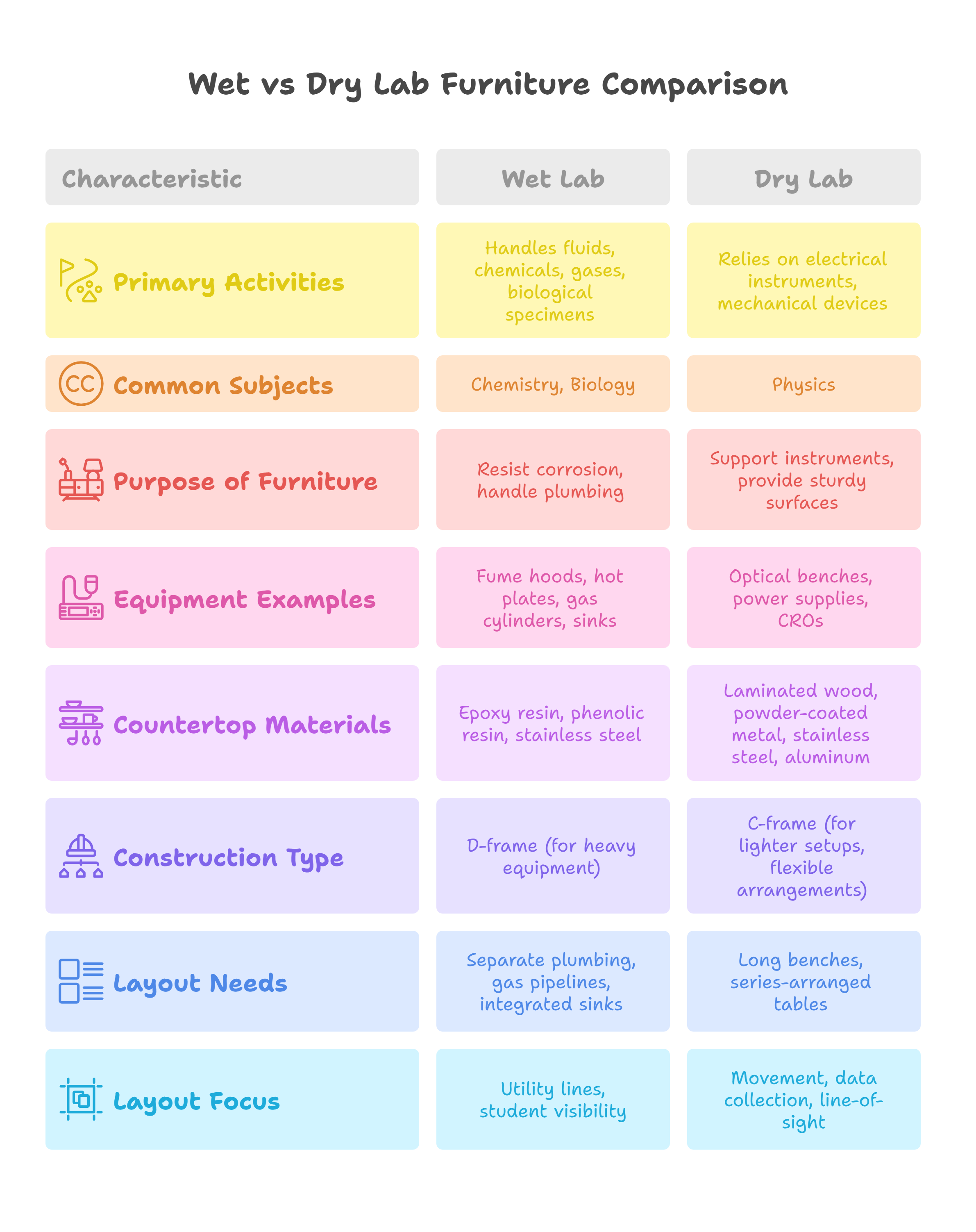
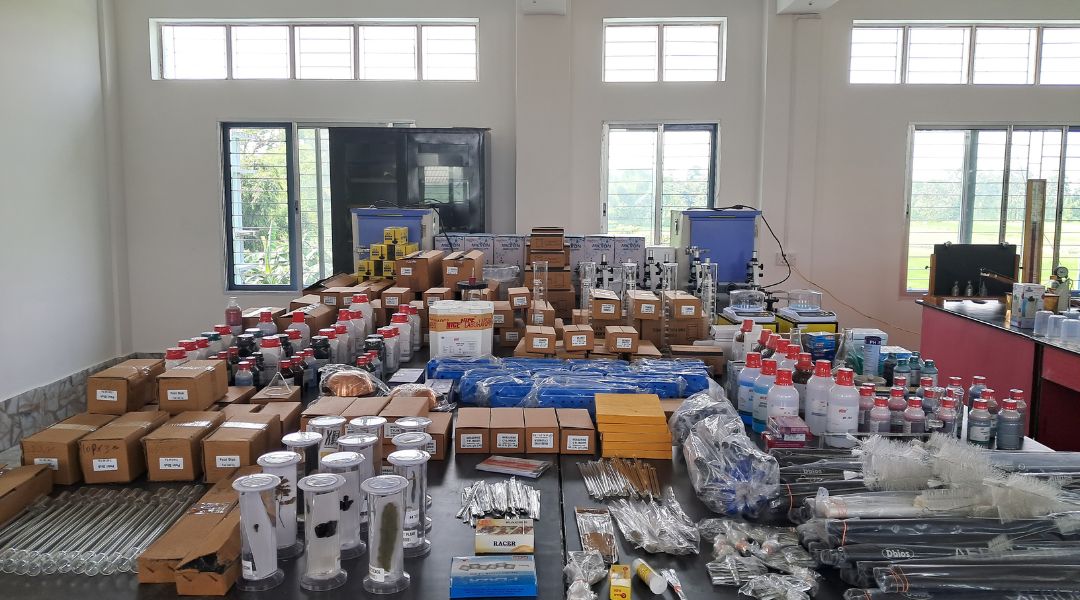
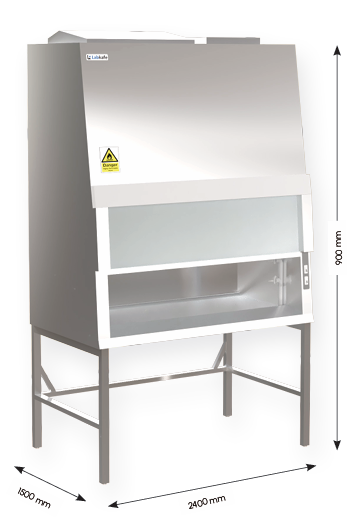
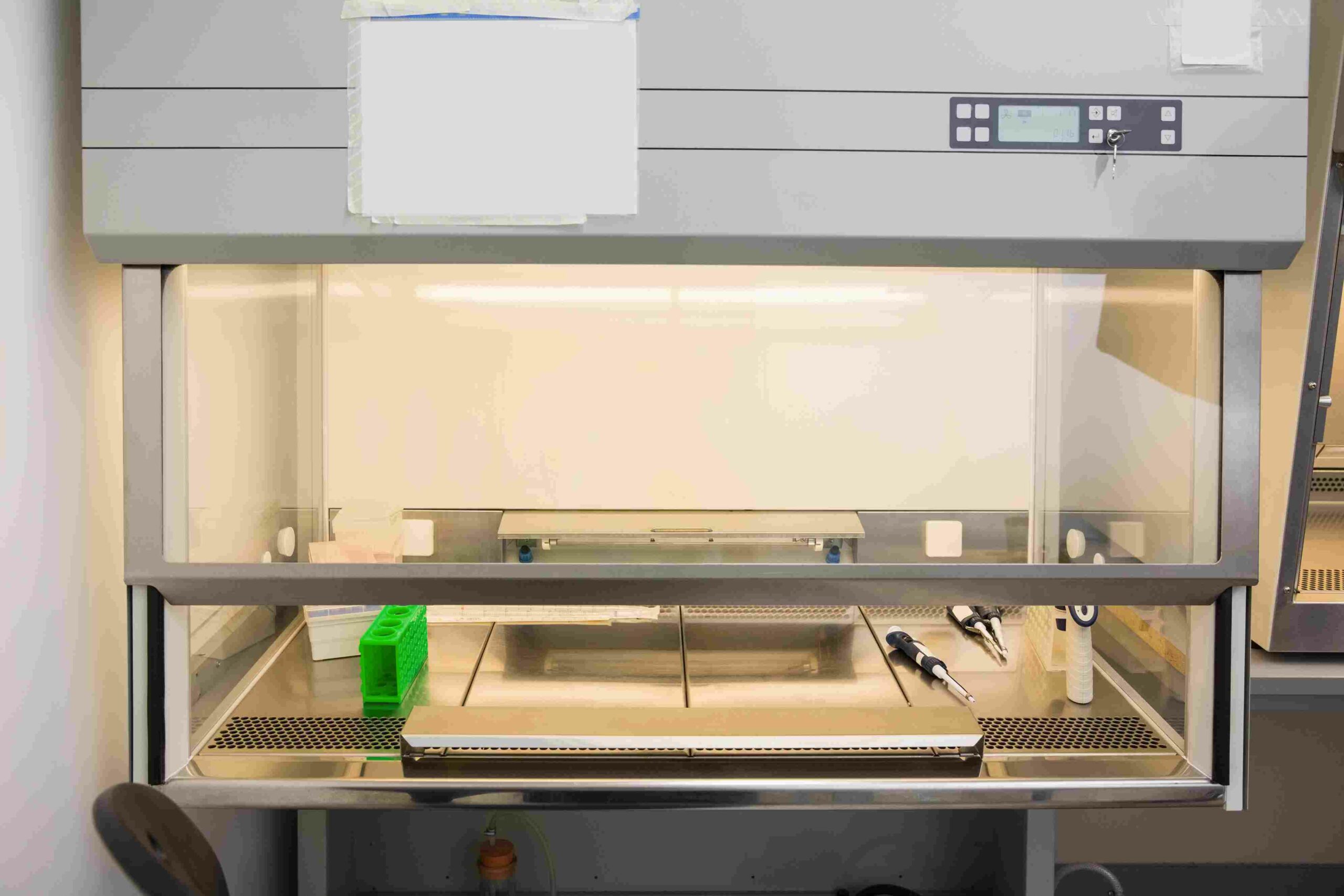
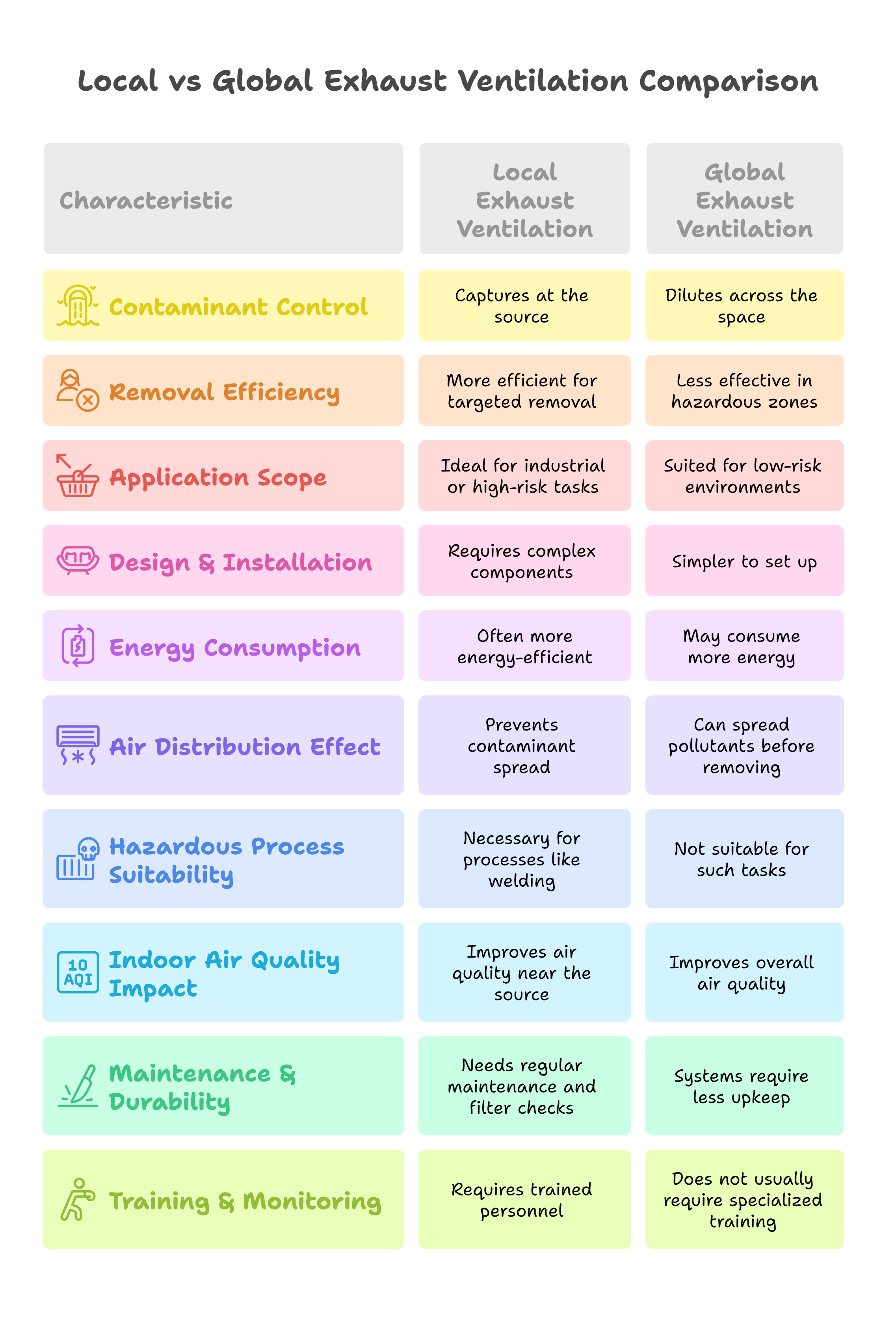

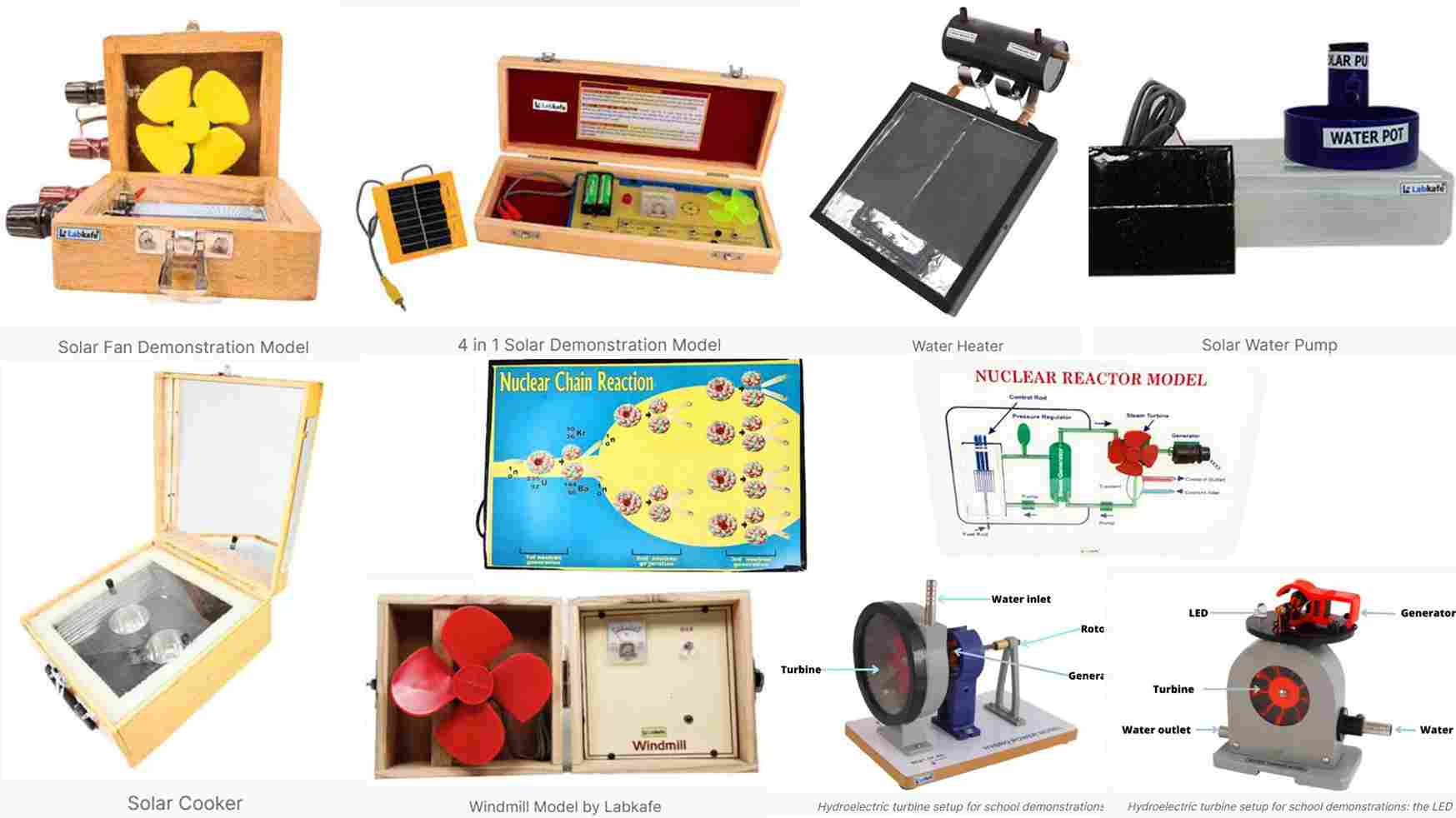
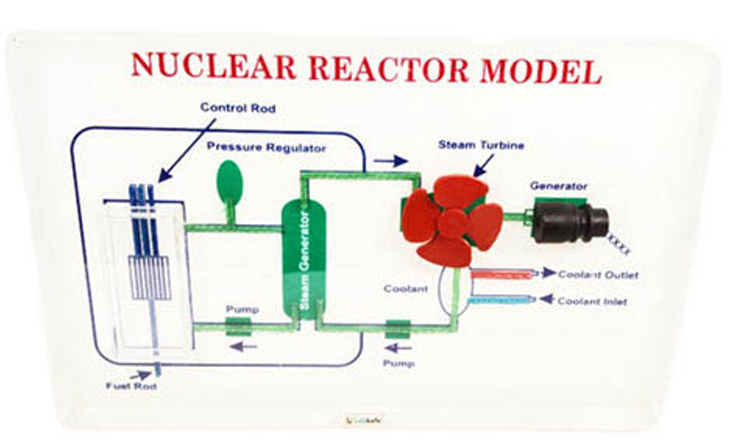
Leave a Reply